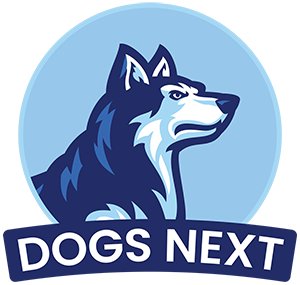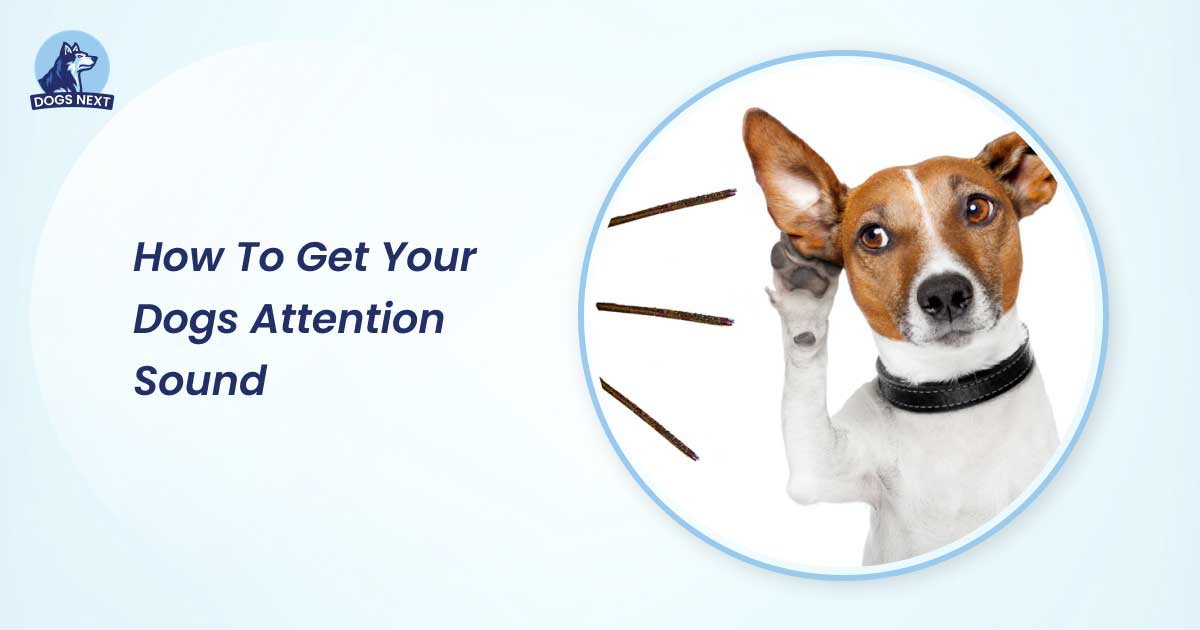Getting your dog’s attention with sound is easy and effective. Dogs respond well to auditory cues.
Sound is a powerful tool for communication with dogs. Whether you use a clicker, a whistle, or your voice, the right sound can grab your dog’s focus instantly. Dogs naturally respond to sound due to their keen hearing abilities. By using sound strategically, you can train your dog, correct behaviors, and enhance your bond.
This approach works wonders in various situations, from training sessions to everyday interactions. Understanding how to use sound correctly ensures that your dog pays attention to you and follows your commands. Ready to discover the secrets of using sound to captivate your dog’s attention? Let’s dive in!
Using Attention-grabbing Sounds
Getting your dog’s attention can be a challenge. Using attention-grabbing sounds is a great way to achieve this. These sounds can effectively redirect your dog’s focus to you. Here, we will explore different methods to get your dog’s attention with sound. You will learn how to experiment with various sounds and find the unique one that works best for your furry friend.
Experiment With Sounds Like Whistles Or Clapping
Trying different sounds can help determine which ones catch your dog’s attention the best. Common options include whistles, clapping, or snapping fingers. Each dog reacts differently, so it’s important to experiment.
- Whistles: High-pitched sounds are often effective. You can try different types of whistles to see which one your dog responds to.
- Clapping: Clapping hands can be a quick and easy way to draw your dog’s focus. Try different rhythms and volumes.
- Snapping fingers: For some dogs, a sharp snap of the fingers can be attention-grabbing.
Here is a table to compare these methods:
| Sound | Effectiveness | Ease of Use |
| Whistles | High | Medium |
| Clapping | Medium | High |
| Snapping fingers | Low | High |
Experimenting with these sounds can help you find the most effective ones for getting your dog’s attention. Consistency is key. Use the chosen sound every time you need your dog to focus on you.
Find A Unique Sound That Catches Your Dog’s Attention
Every dog is unique. What works for one might not work for another. Finding a unique sound that catches your dog’s attention is crucial. It ensures that your dog associates this specific sound with you.
To find the right sound:
- Observe your dog: Watch how your dog reacts to different sounds in your environment. Note which sounds make them perk up.
- Test uncommon sounds: Try sounds that are not usually heard in your home. This could be a squeaky toy, a specific tone, or even a musical instrument.
- Reinforce positive behavior: Once you find a sound that works, use it consistently and reward your dog for responding. This creates a positive association.
Here is a simple list of unique sounds you can try:
- Bell ringing
- Clicker
- Musical instruments (e.g., harmonica, flute)
- Specific verbal cues (e.g., “Hey!” or “Look!”)
Using these unique sounds can make a big difference in getting your dog’s attention. It helps ensure that your dog focuses on you, even in distracting environments. Remember to be patient and consistent in your training.
Using Clicker Training For Focus
Getting your dog to pay attention to you can be a challenge, especially in a distracting environment. One effective method is using clicker training for focus. Clicker training for dogs involves using a small device that makes a clicking sound to mark desired behavior. This method can help your dog understand and improve focus on you when needed.
Introduce A Clicker To Mark Attention And Reward
Clicker training for dogs starts with introducing the clicker to your pet. The clicker is a small device that makes a distinct clicking sound. This sound acts as a marker, telling your dog that they have done something right.
Follow these steps to introduce the clicker:
- Get a clicker: You can find a clicker at most pet stores or online.
- Prepare treats: Have some small, tasty treats ready. These will be used as rewards.
- Click and treat: Click the clicker and immediately give your dog a treat. Do this several times so your dog associates the click with a reward.
Repeat this process multiple times a day for a few days. Your dog should soon understand that the click means a treat is coming.
As your dog gets used to the clicker, start using it to mark specific behaviors. For instance, click when your dog looks at you or responds to their name. Immediately give a treat after the click to reinforce the behavior.
Reinforce Focus On You When The Clicker Sound Is Made
Once your dog associates the clicker sound with rewards, use it to reinforce focus on you. This part of focus training with clicker helps your dog understand that paying attention to you is rewarding.
Here are the steps to follow:
- Get your dog’s attention: Call your dog’s name or make a sound to get their attention.
- Click and treat: The moment your dog looks at you, click the clicker and give a treat. This reinforces the behavior of looking at you when they hear the sound.
- Repeat: Continue this process in various settings to strengthen the behavior. Practice in different rooms, outside, and around distractions.
Over time, your dog will start to focus on you more consistently when they hear the clicker sound. This is crucial for effective communication and training. Consistent practice and rewards will help your dog learn to pay attention to you regardless of distractions.
Remember to keep training sessions short and fun. Dogs learn best in short bursts rather than long sessions. With patience and consistency, clicker for dog attention can be a valuable tool in your training toolkit.
Avoid Overuse To Maintain Effectiveness
Introduction paragraph about How to Get Your Dog’S Attention With Sound and Avoid Overuse to Maintain Effectiveness…
Using sounds to get your dog’s attention is a great tool for training and emergencies. However, overusing these sounds can reduce their effectiveness. It’s crucial to use them wisely to ensure they remain effective. Let’s explore how to maintain the effectiveness of sounds and prevent sound desensitization in dogs.
Reserve Attention Sounds For Training Or Emergencies
To keep dog attention sounds effective, use them sparingly. Reserve these sounds for training sessions or emergency situations only. This will help your dog understand the importance of responding to these cues.
Consider these tips for maintaining the effectiveness of sounds:
- Use a specific sound only during training: Choose a unique sound, like a whistle or clicker, and use it exclusively for training. This helps your dog associate the sound with learning.
- Save distinct sounds for emergencies: Pick a different sound, such as a loud clap or a special word, to use only in emergencies. This ensures your dog recognizes the urgency.
- Consistency is key: Stick to the chosen sounds and avoid using them in everyday situations. This prevents confusion and maintains their significance.
By reserving attention sounds for specific purposes, you can train your dog more effectively. This practice also ensures your dog understands the importance of these sounds during emergencies.
Vary Sounds To Avoid Desensitizing Your Dog
To prevent sound desensitization in dogs, vary the sounds you use. Using the same sound repeatedly can make your dog less responsive over time. Introducing different sounds helps keep your dog attentive and engaged.
Here are some strategies for training your dog with varied sound cues:
- Alternate between different sounds: Use a mix of whistles, claps, and verbal cues. This keeps your dog alert and responsive.
- Introduce new sounds gradually: Start with one sound and add new ones over time. This helps your dog adjust and learn to respond to multiple cues.
- Reward responsiveness: Whenever your dog responds to a sound, give a treat or praise. This reinforces positive behavior and helps your dog associate sounds with rewards.
Using varied sounds in your training sessions can make them more effective. It ensures your dog remains attentive and responsive to different cues. This approach is essential for maintaining the effectiveness of sounds in the long run.
Here’s a simple table to summarize the key points:
| Strategy | Purpose |
| Use specific sounds for training | Help dog associate sound with learning |
| Save distinct sounds for emergencies | Ensure dog recognizes urgency |
| Alternate between different sounds | Keep dog alert and responsive |
| Introduce new sounds gradually | Help dog adjust and learn multiple cues |
| Reward responsiveness | Reinforce positive behavior |
In summary, maintaining the effectiveness of sounds involves using them sparingly and varying the cues. This ensures your dog stays attentive and responsive during training and emergencies.
Frequently Asked Questions
How Can I Use Sound To Get My Dog’s Attention?
Using sound, like a whistle or clicker, can grab your dog’s attention quickly. Consistent training is key. Pair sounds with rewards to reinforce behavior.
What Sounds Do Dogs Respond To Best?
Dogs respond well to high-pitched sounds and noises. Try using whistles, clickers, or specific words. Consistency matters.
Is It Effective To Use A Dog Whistle?
Yes, a dog whistle can be very effective. It emits a high-pitched sound that dogs can hear. Use it consistently for training.
Can Sound Help In Training My Dog?
Absolutely, sounds are great for training. They help in grabbing attention and reinforcing commands. Always pair sounds with positive reinforcement.
Conclusion
Getting your dog’s attention with sound is simple and effective. Use consistent sounds to train your dog. Short, sharp noises work best. Reward your dog when they respond. Patience is key. Practice regularly for best results. Your bond will grow stronger with time.
Enjoy the process and have fun together. Happy training!

I’m David, an expert contributor and writer, with two furry friends of my own, I know the challenges of raising and caring for dogs. From training to nutrition and health, my goal is to provide valuable insights and advice to help create strong bonds and happy, healthy lives. Find me in Twitter.




